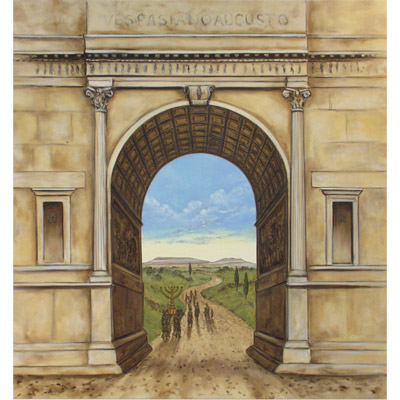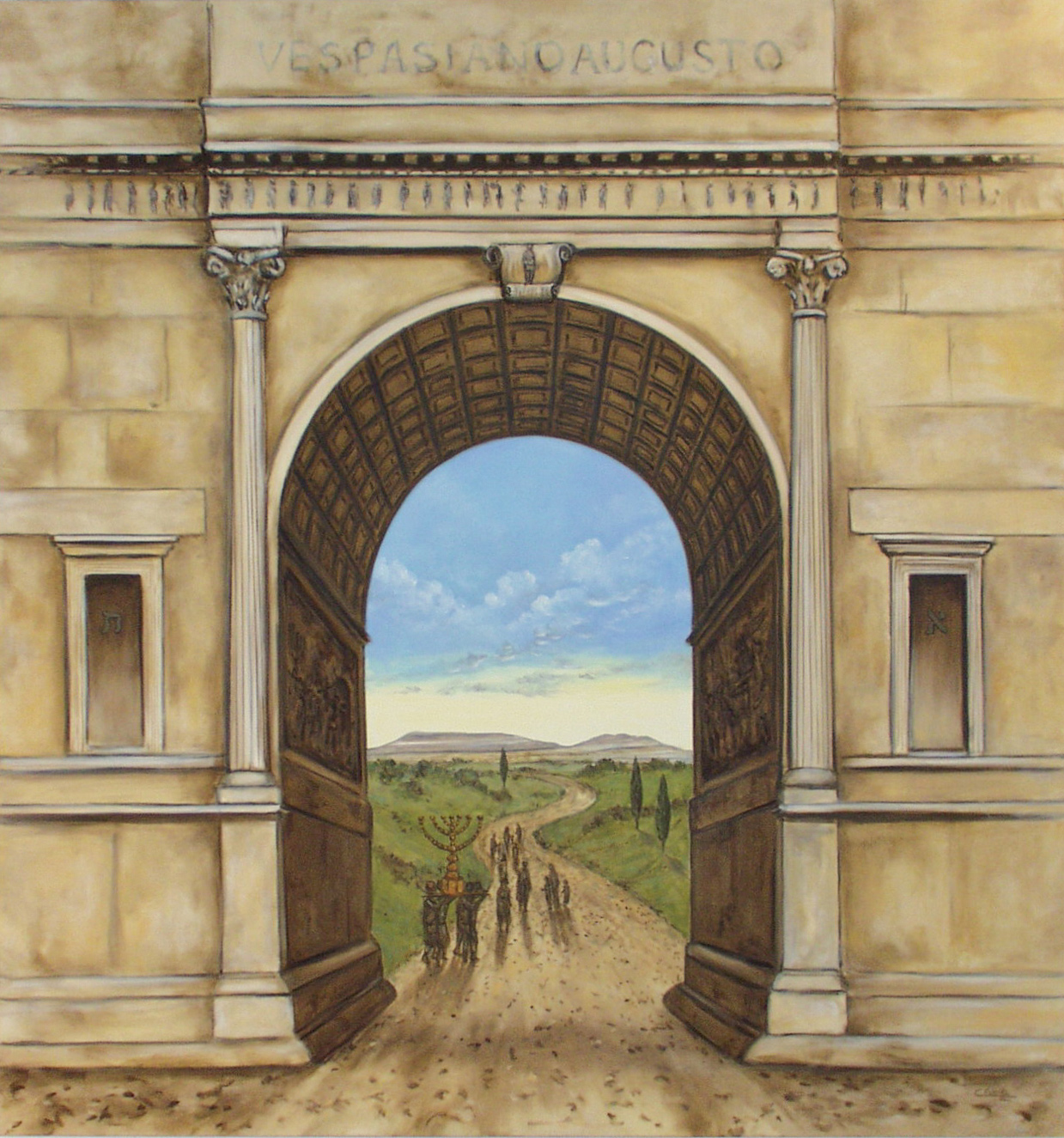The Arch of Titus - Triumph of Emunah
- Charles H. Reinike III -
oil on canvas
70" X 66"
$9500
The symbolism in this painting from the Arch Series is complex. The central theme of this work is: Trust in Faith — Emunah.
Reinike reimagines a scene from ancient history, transforming a symbol of conquest into one of reflection, return, and spiritual endurance. The viewer is looking up into the imposing Arch of Titus, the Roman monument commemorating the sacking of Jerusalem in 70 CE and the seizure of sacred artifacts from the Second Temple — most famously, the golden Temple Menorah.
Yet, Reinike masterfully subverts this historical narrative. The very bas-reliefs depicting Roman conquest seem to animate, as figures emerge from their stony confines, carrying the sacred menorah not into the Imperial City, but, instead, back out through the arch. This re-enactment transforms the triumphal parade of Roman domination into an eloquent act of spiritual restoration, depicting the humble faithful returning the menorah to its true, sacred origins.
Beyond the arch, a winding path leads across a soft, sunlit landscape to a distant mountain, identified by Reinike as his vision of Har Karkom — a site in the Negev desert some scholars propose as the true biblical Mount Sinai.
The menorah, a symbol of divine light, is not being brought to an emperor’s throne, but toward the very locus of the covenant, The Ten Commandments, and divine revelation.
The contrast is striking: the stone monument of the empire frames a landscape of renewal. The rigid, formal arch is heavy with historical weight — inscriptions, columns, and shadowed carvings. Yet the open countryside beyond offers light, life, and possibility.
Through this composition, Reinike evokes the journey from exile to home, from ephemeral earthly power to enduring eternal meaning, from the fall of Jerusalem to the profound hope symbolized by Sinai.
The Arch of Titus, once a symbol of conquest, becomes a threshold of return. The painting does not deny history’s pain, but dares to imagine its healing.
Through subtle distortion of time and space, Reinike invites us to consider: memory, unwavering faith, and cultural identity outlived the seemingly immutable power of the Roman Empire.
Read the artist's statement to appreciate the various symbols found in the painting.
Artist's Statement PDF

